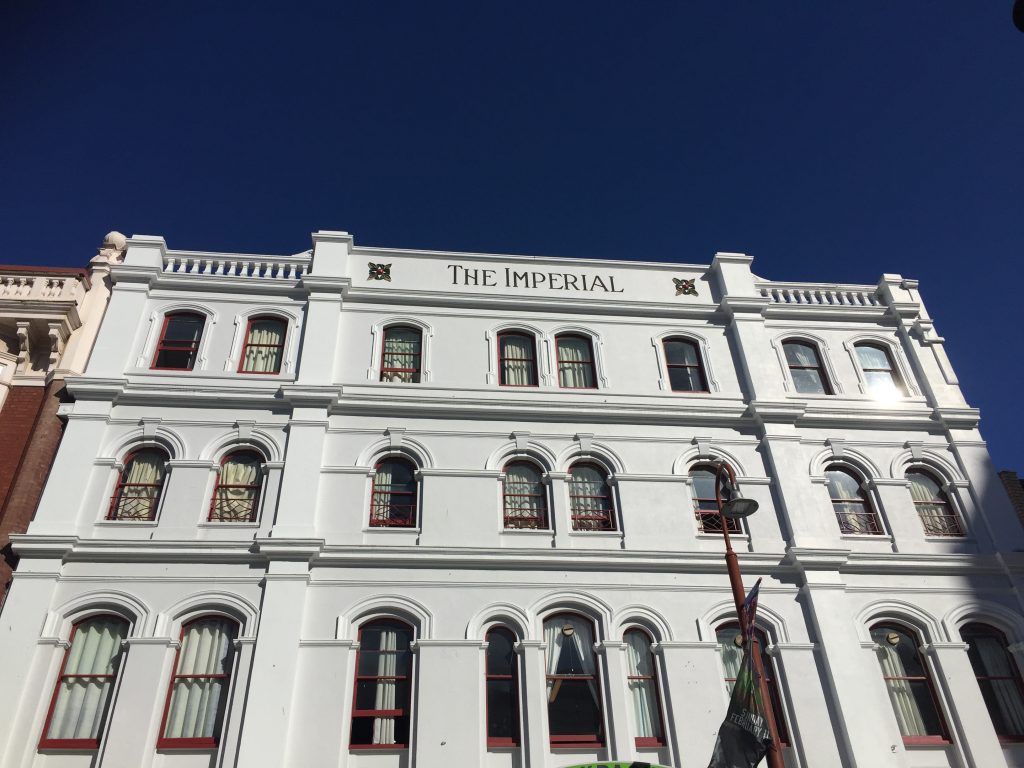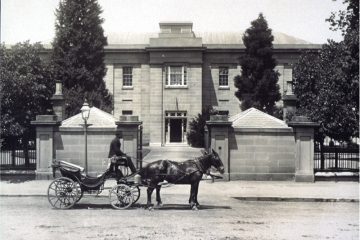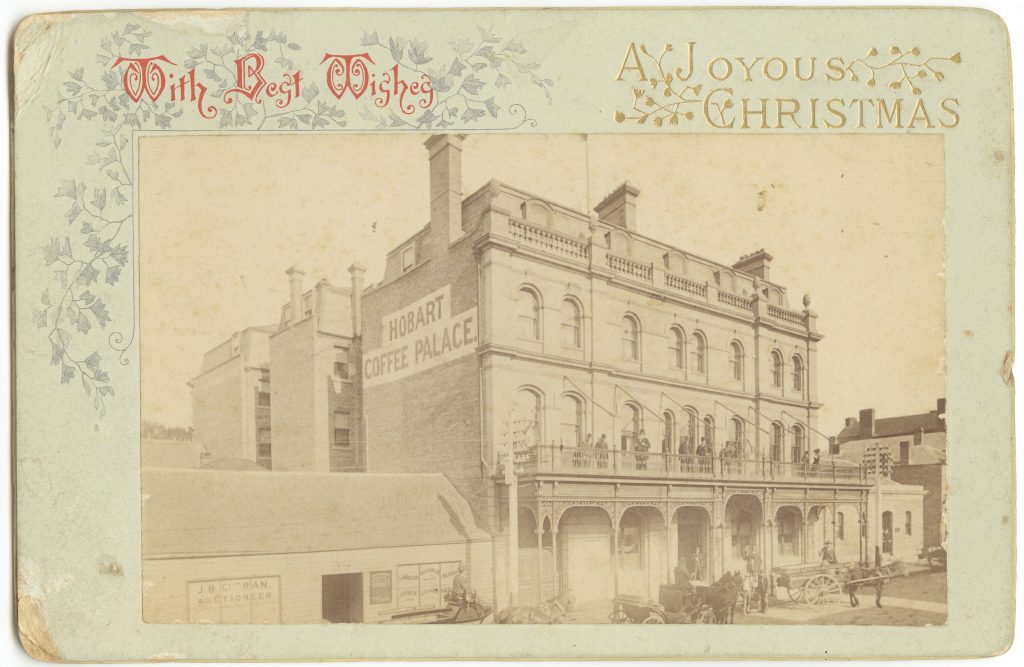
Coffee Palaces in Hobart got off to a shaky start, with only 6 men turning up to the first meeting to establish the Hobart Coffee Palace Company in April 1880 .
Alcohol-free taverns were very popular in England, starting off in 1872 in industrial towns of Bristol, Liverpool and Reading. In London the Duke of Westminster (1825 – 1899) backed the establishment of Coffee Houses for the People in 1877, which he said would provide “the most beneficial results to the working classes and the community at large.” This meeting was attended by members of both houses of Parliament and influential ladies and gentlemen from around the country. A committee was formed to assist local efforts to establish alcohol-free taverns in the working class areas of London.
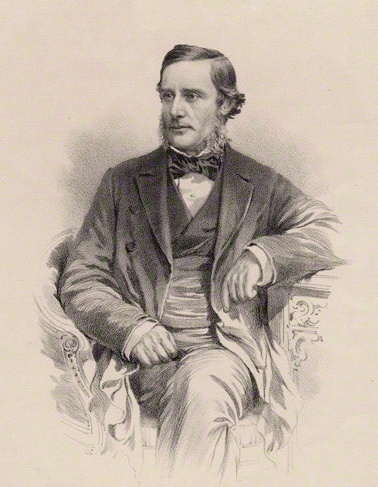
The coffee palace movement was said to be one of the most significant signs of the times, enthusiastically supported by the Temperance Movement.
Melbourne and Sydney businessmen saw the profits to be made after the success of the first Victorian coffee palace opened in Williamstown in 1878, which was said to have all the attractions of a gin palace without the gin.
This was followed by the Sydney Coffee Palace Hotel Company in late 1879, then the Collingwood Coffee Palace in Melbourne, on the heels of which were the Victoria Coffee Palace Melbourne in 1880 and the Grand Coffee Palace Melbourne in 1883.
While the coffee taverns of England were targeting the lower and working classes, those of Australia had their sights set on the middle and upper classes, hence the upgrade in naming from tavern to palace.
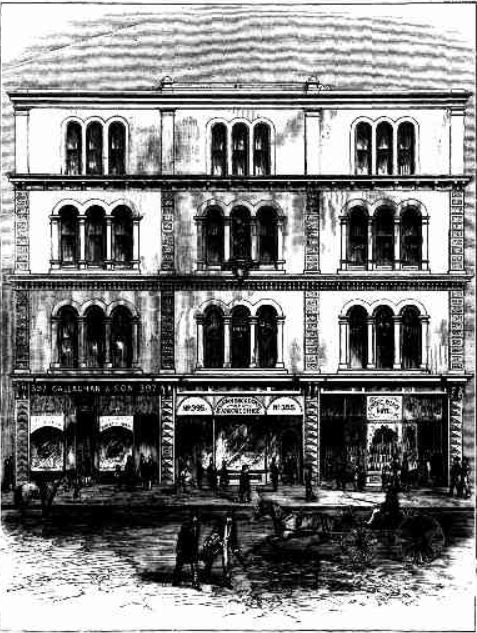
The Australian coffee palaces were established by merchants, business men and philanthropists, and were geared towards respectably born, educated clientele – the CBD professional workers – and the grand architecture of the Coffee Palaces reflected this.
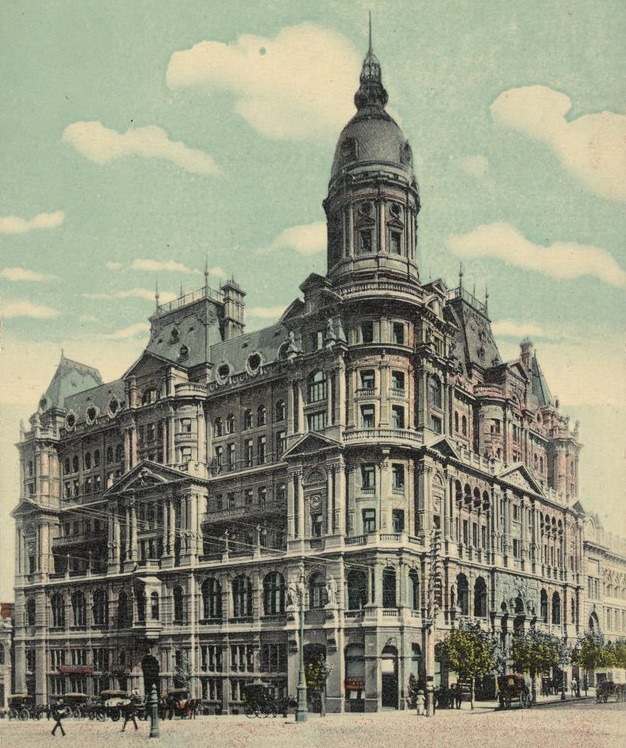
Demolished 1973. Image: Wikipedia commons
Facilities were detailed in newspaper advertisements: a public bar – without any alcohol, marble tables, good lighting and ventilation, punkah fans (moving lengths of fabric to stir the air), waitresses, set times for luncheon, liberal servings of food, great variety and well cooked, well priced food and accommodation, managers to make sure everything is in good order, separate dining rooms for men and women, billiard rooms, reading rooms, lavatories, in the evenings, dining rooms for young men would be given over for them to play chess, draughts or dominoes : all this so visitors to the city would have no need to go to a public house for anything.
Simpler, more modest structures, located outside of the city centres, were intended for the tradesmen, labourers and factory workers.
By 1883 the Coffee Palace was a well recognised institution across Australia – except for Hobart. After the first underwhelming Hobart Coffee Palace Company meeting in 1880, eventually sufficient enthusiasm was raised to form the company. Hobart’s first dedicated coffee palace began construction in Collins St in 1884: The Hobart Coffee Palace. This merged with the Victorian Coffee Palace (1888) and later changed its name to the Imperial Coffee Palace.
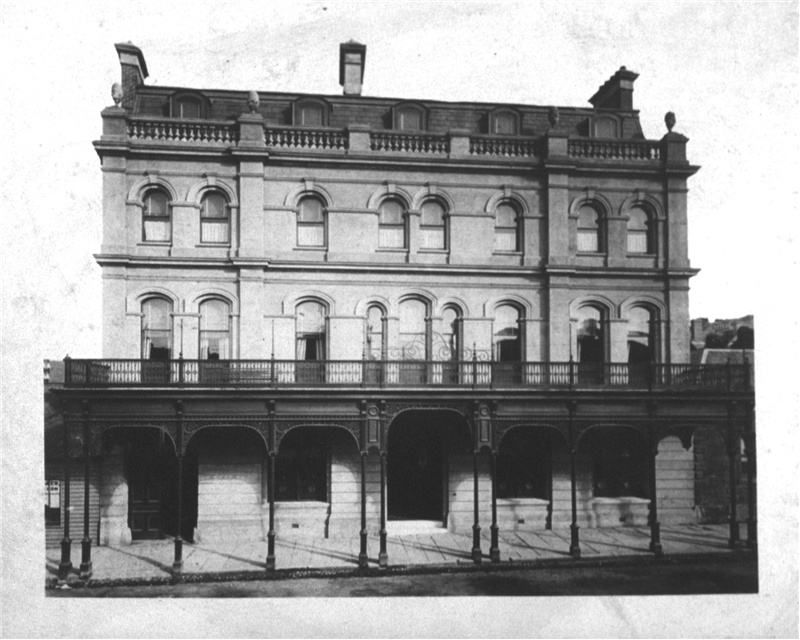
The Federal Coffee Palace opened in Murray Street in 1890.
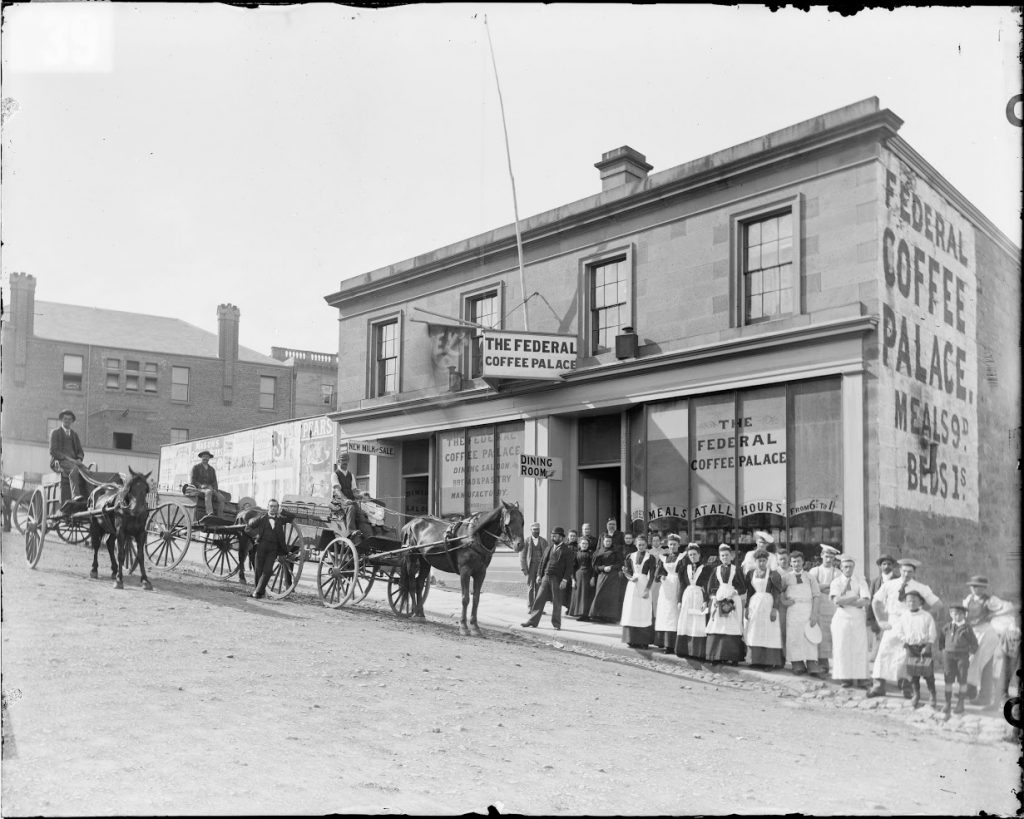
1892 saw Ingle Hall, at the corner of Macquarie and Argyle Streets, turned into firstly the Orient Coffee Palace. Under successive proprietors it was renamed Tasmanian Coffee Palace (1898), Anderson’s Coffee Palace (1902), Norman’s Coffee Palace (1910).
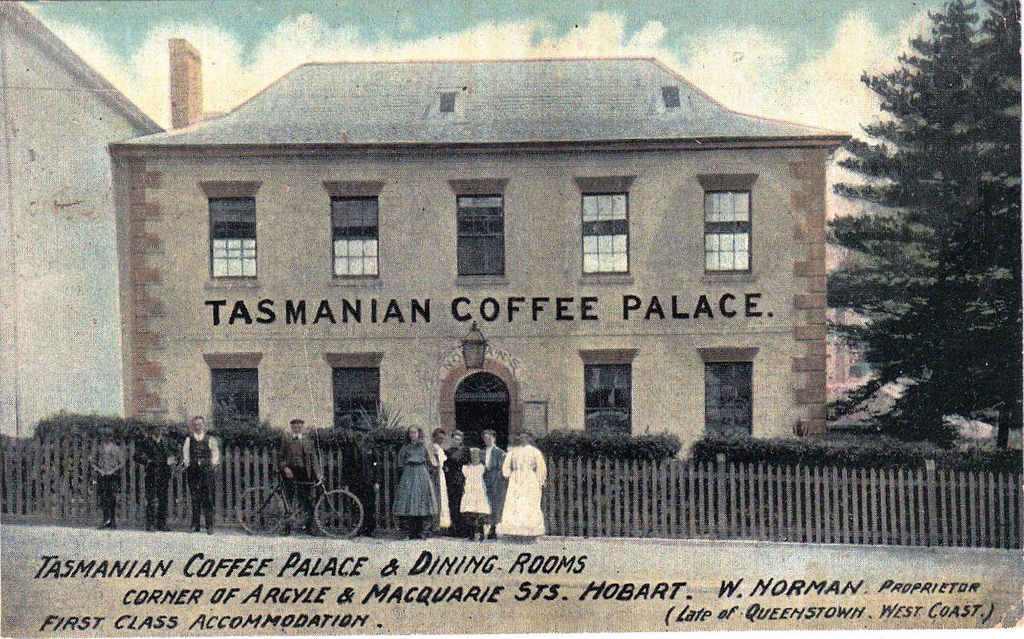
Further down Macquarie Street, in the far less salubrious Wapping, was the Tasma Coffee Palace – formerly the Phoenix Hotel – on the corner of Hunter and Macquarie Streets. This building was demolished in 1938.
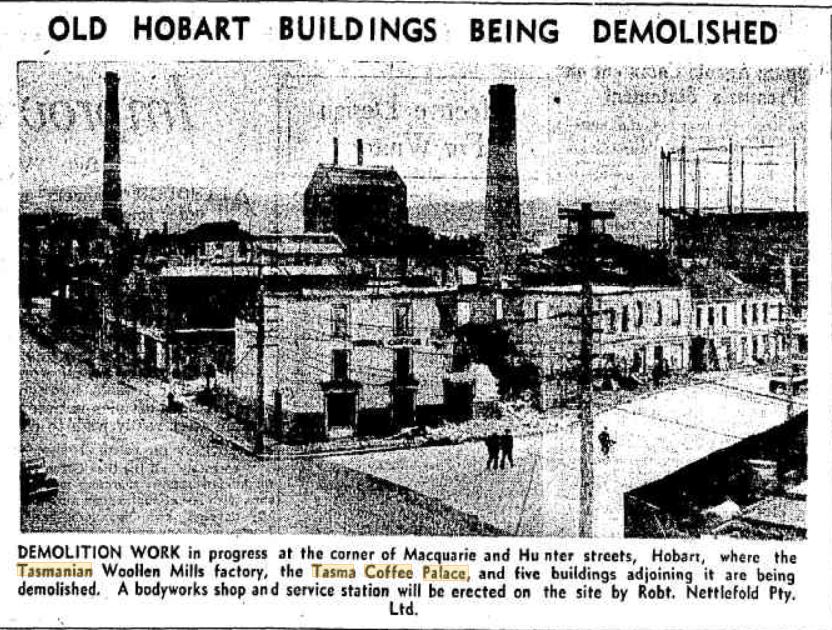
Launceston had its share of coffee palaces: Launceston Coffee Palace 1882 (75 Brisbane St), International Coffee Palace (130 Brisbane St), Commonwealth Coffee Palace (23 Tamar St, demolished 1960s). Federal Coffee Palace 1887 (67 Brisbane St, demolished 1976) and Shield’s Coffee Palace (77 Esplanade, demolished 1950.)
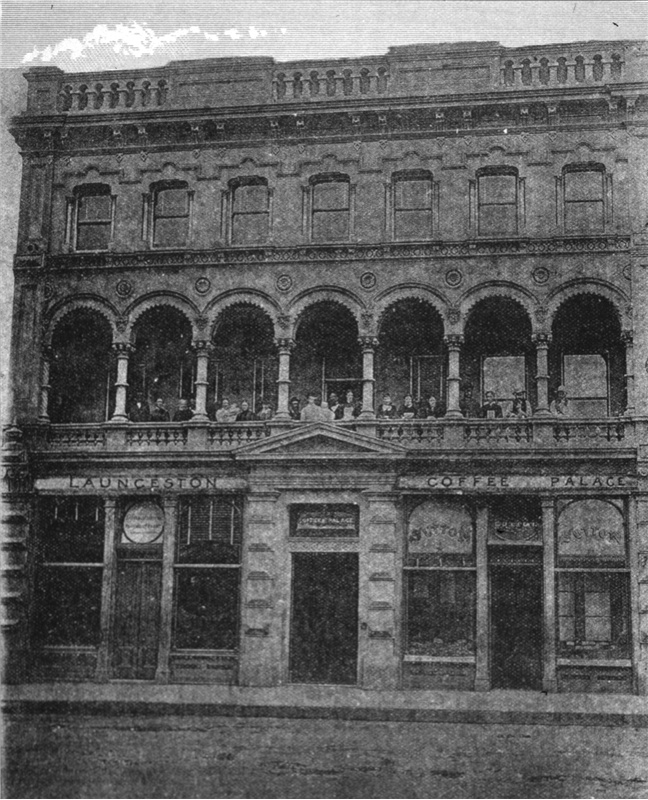
Around Tasmania at this time you could find coffee palaces of wildly varying quality in Devonport, Burnie, Sprent, Wyndard and Maria Island.
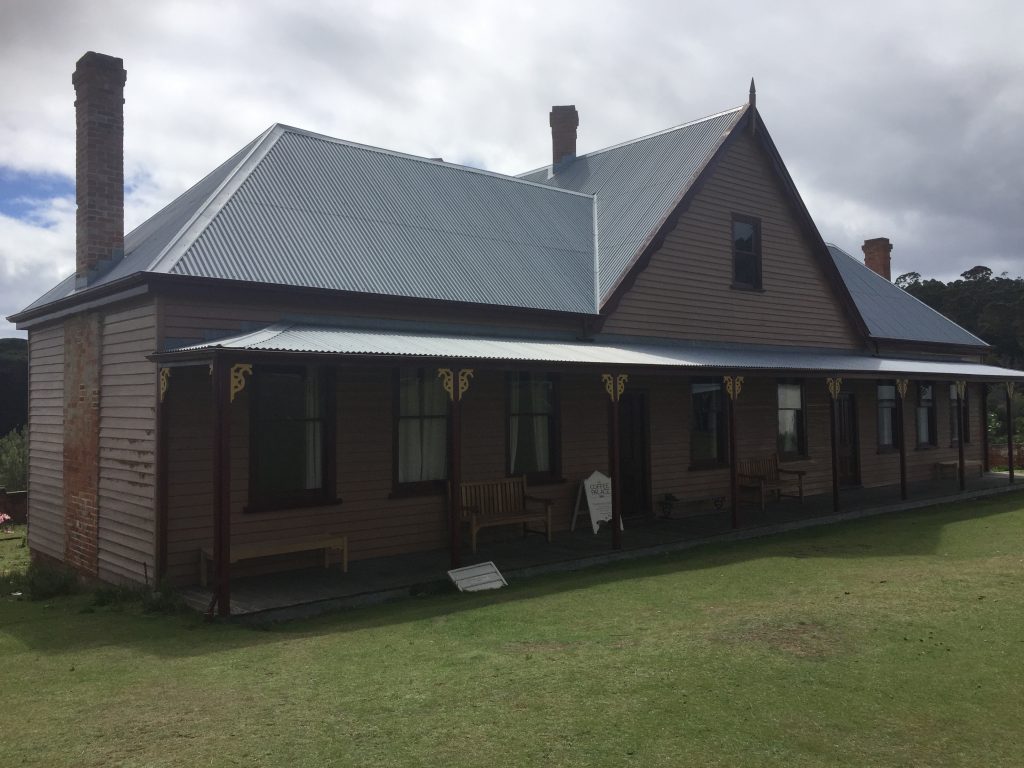
The Coffee Palace industry in Tasmania hit its peak in 1889 and succumbed to the Australia-wide economic crash of 1890.
While many of the coffee palace companies around Australia went under, most of the buildings were reopened with the support of a liquor license. The influence of the Temperance Movement in Tasmania faded away – but we still have some beautiful buildings to remind us of our more sober, coffee-imbibing past.
